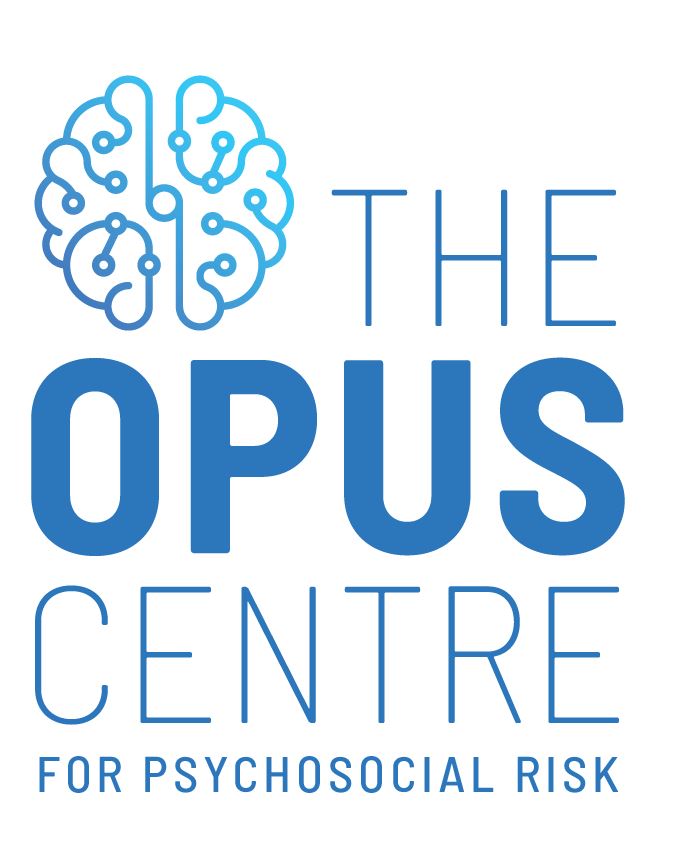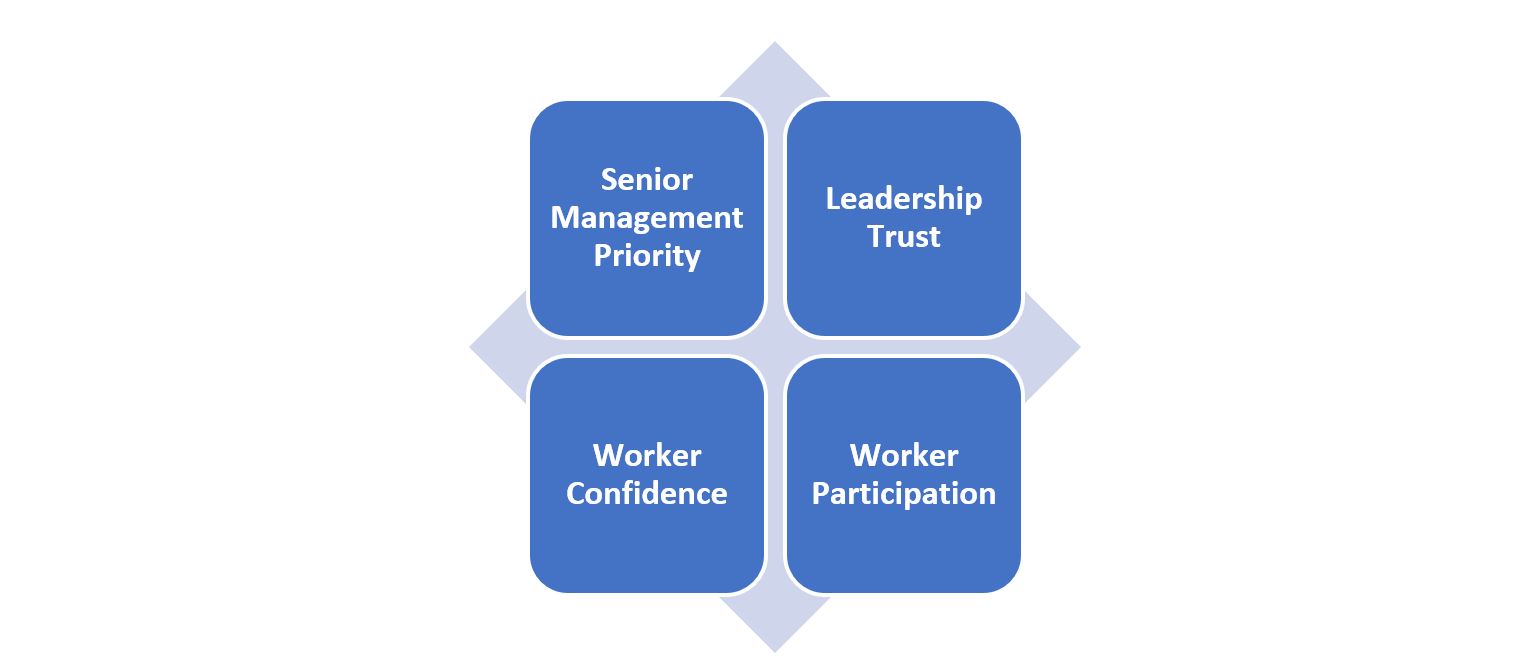

Psychosocial Risk Assessment – PRC16TM
The Opus Centre’s Psychosocial Risk Climate (PRC16TM) tool helps organisations quickly identify factors in the workplace that can lead to psychosocial risk and help guide employers to the most effective prevention and support solutions.
The PRC16TM includes:
– Online survey (Using links and/or QR codes)
– 16 validated items (5 minutes to complete)
– Captures Lead/Climate Indicators as well as Psychosocial Risks
– Items are customisable to the organisation
– Easy to interpret reporting (including Heat Maps and Recommendations)
– 1hr Presentation of results (including advice on next steps)
OPTIONAL
– Online reporting dashboard (Microsoft Power BI)
– Additional items to capture hazards and outcomes specific to your organisation
(Customer Aggression, Traumatic events, Fatigue, Respect at Work, Exhaustion etc)
The PRC16TM Benefits
The PRC16TM has been developed from a combined 20+ years experience in workplace research and industry practice. The risk assessment tool has been developed to include:
- Language that is easy to understand
- Differentiation of proactive and reactive climates
- Risk indicators for specific hazards (e.g., work pressure, bullying, inadequate resources)
- Customisable questions for specific industries
- Versions for small business (5-10) through to large enterprises
The PRC16TM also provides a workplace with the following benefits:
- Clear guidance as to when a risk becomes a hazard through the organisation report and benchmarks. As the lead indicators take into account perceptions of both demands and resources, it can more accurately identify demands are excessive, even for those that are engaged by high demand.
- Identification of the risks to health outcomes in your specific workplace, rather than an industry generalisation. We understand that workplaces within industries, although similar in some ways, can be very different in risk profiles and would benefit from a tailored monitoring system.
- Directions for appropriate interventions to focus on in collaboration with the WorkEsteem Intervention Program (the Program). Through the Program, key personnel can identify tailored, reasonable and practicable actions that build the capacity of their WHS systems to reduce risk and manage hazards.
PRC16 Scale Validation Summary
Download the PRC16 Validation Summary here!
More about PRC16

For over 40 years academic researchers in the field of workplace psychology have shown the link between mental health and work-related factors (e.g., job demands, job control, job resources). Internationally the nature of work has shifted away from physical demands towards more cognitively complex demands. Consequently, academic models are becoming increasingly important in helping us understand the activities that promote worker mental health and those that contribute to psychological injury.
The key challenge is how to best protect worker psychological health when so many individual and organisational variations exist.
For instance, while a high level of job demand is perceived as engaging for one individual it might be perceived as difficult for another to achieve, and for a third person it may depend upon the resources they are provided. We must also consider that the perception of the same job demand may change throughout an employee’s work life.
For many organisations implementing regular assessment of every psychosocial factor, that has potential to become a hazard, is not feasible, and by the time the results have been delivered, some hazards have already occurred. This is why more mature employers are seeking to capture lead indicators that can predict psychosocial risk factors well in advance.
Lead Indicators are conditions in the workplace that can be observed and measured to benchmark current levels of risk, predictor future trends, and evaluate strategies to protect worker health and promote wellbeing. Monitoring and managing lead indicators not only fulfills legal obligations to protect worker health, but provides a clear, evidence based path to managing these factors effectively.
Researchers at The OPUS Centre have now identified specific lead indicators for psychosocial risk that can help organisations predict psychosocial hazards early. Academic evidence shows several common underlying themes for lead indicators:

The proactive indicators focus on preventing exposure to hazards, and the reactive indicators ensure an appropriate response if hazards do occur. In a workplace situation these can be called your proactive and reactive climates. Understanding proactive and reactive climates helps workplaces to know if their WHS systems provide an adequate balance of prevention and support.
While awareness of hazardous psychosocial factors such as excessive job demands, inadequate resources, bullying and harassment is widely known, workplace health and safety professionals are starting to ask three very important questions:
- How do I know the point when a psychosocial factor becomes a hazard?
- Can I measure the risk of poor health outcomes specifically for my organisation rather than generally for my industry?
- Which interventions will be the most effective to reduce risk and manage hazards in my workplace?
To answer these questions The Opus Centre has developed the Proactive Reactive Climate (PRC16TM). A 16-item lead indicator assessment for psychosocial risk.

